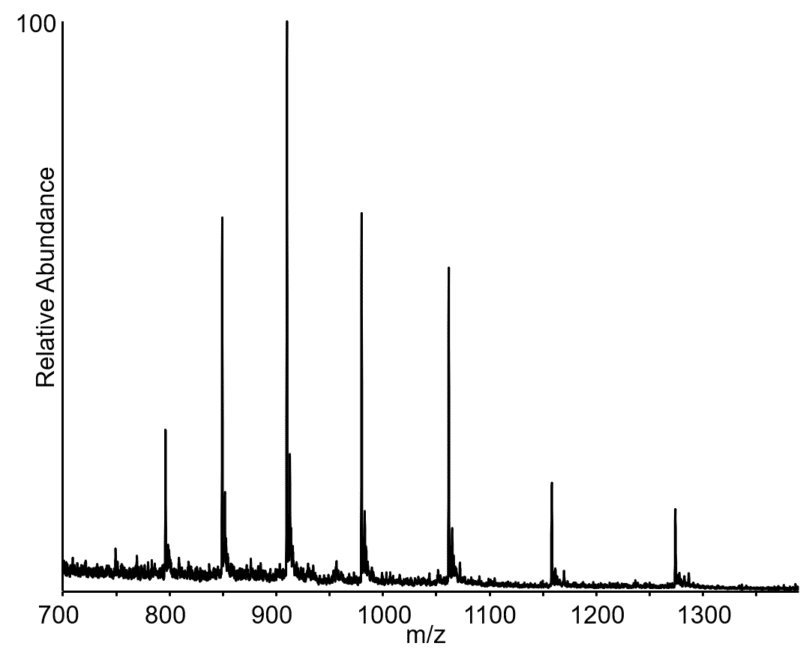Integrated Protein Technologies Inc. and MS Vision have entered into a sales and support agreement to jointly bring IPT’s SampleStream™ device to the European market.
The SampleStream™ platform is a fluidic module designed for the extreme concentration of dilute samples such as injectables, rapid buffer exchange, online reduction and/or digestion and ultra-robust, unattended high throughput operation. It integrates the industry gold-standard CTC PAL3 robot and provides powerful workflow automation capabilities.
As a dedicated device for sample pretreatment of biologics prior to analysis, it’s seamless integration via the CTC PAL and it’s robust operation for denatured as well as native MS in intact protein, middle-down and top-down analysis workflows it is the perfect combination with MS Vision’s high mass native MS technology such as NativeQE or NativeSynapt.
New publication on the use of SampleStream for set-up of a platform for automated immunoprecipitation, sample preparation and mass spectrometric analysis for immunoglobulin proteoforms:
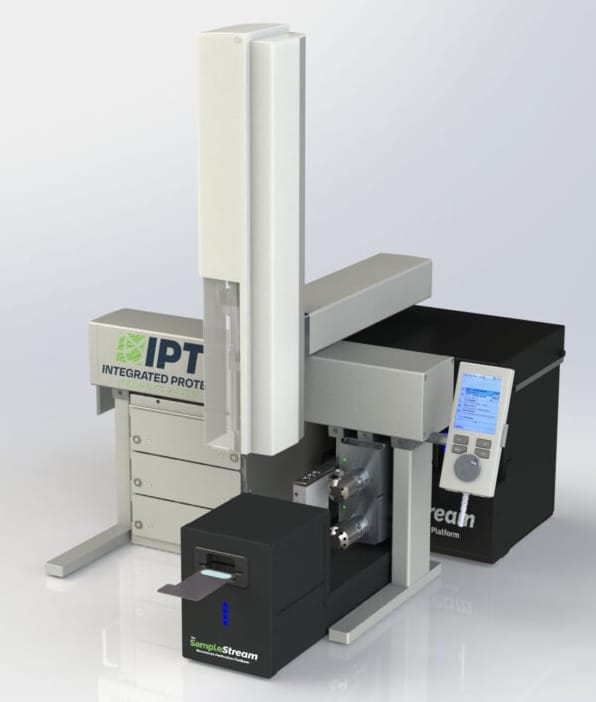
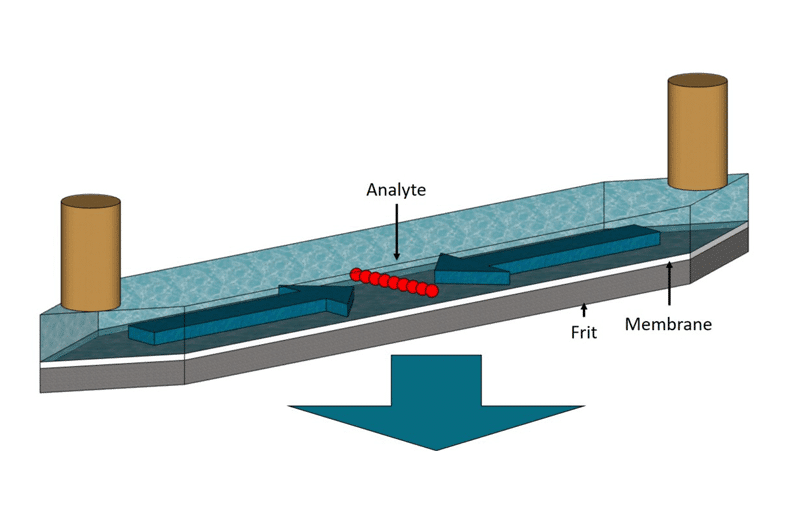
The heart of the SampleStream™ platform is a small fluidic channel that incorporates a molecular weight cutoff membrane. Combined with bullet-proof and time tested syringe pumps and valves, this channel operates in one of two modes.
Liquid Chromatography, Replaced.
- Low pressure operation (<30 bar) – no issues with high pressure valves or frequent leaks
- Driven by low maintenance syringe pumps – thousands of pumps installed, technology proven for years, low cost in repair and replacement
- Single membrane good for >1,000 analyses – long-lasting consumable, cost of operation much lower than in LC.
- High membrane area enables high wash volume in comparison to liquid chromatography – easy to concentrate dilute samples e.g. from injectables
Sample Focusing
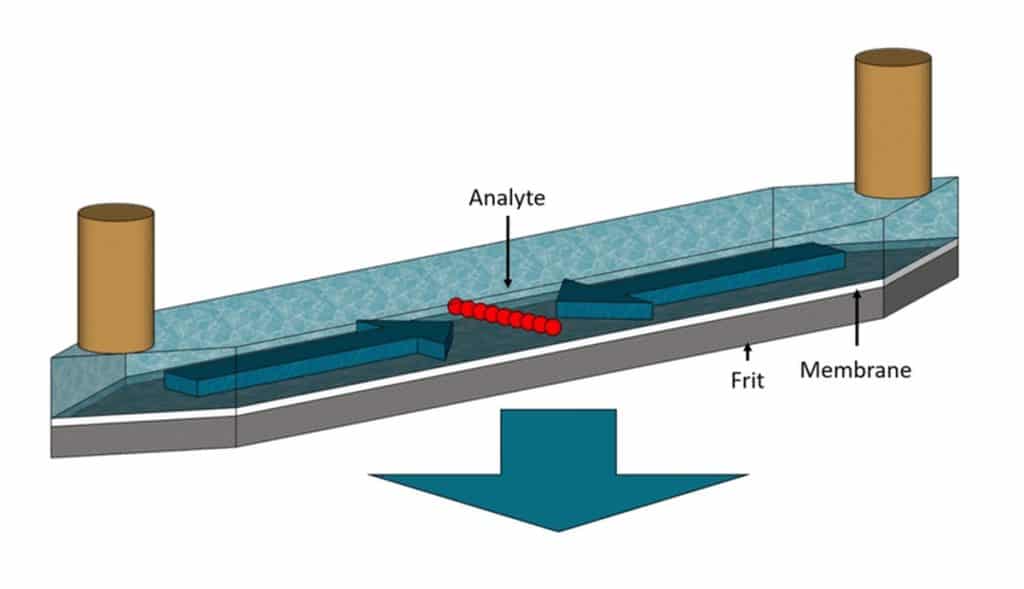
Solvent Insensitivity
Since nothing is ever bound to a stationary phase, the SampleStream™ module is insensitive to loading buffer conditions.
Concentration Factor
With the proper membrane selected, the fluidic channel becomes leak-tight for retained analytes, enabling concentration of analytes from extremely dilute samples in record time. In testing, we have achieved >1,000-fold enrichment of proteins.
Buffer Exchange
Pressure driven flow across the membrane enables a large volume of buffer to wash retained solutes in record time.
Sample Elution
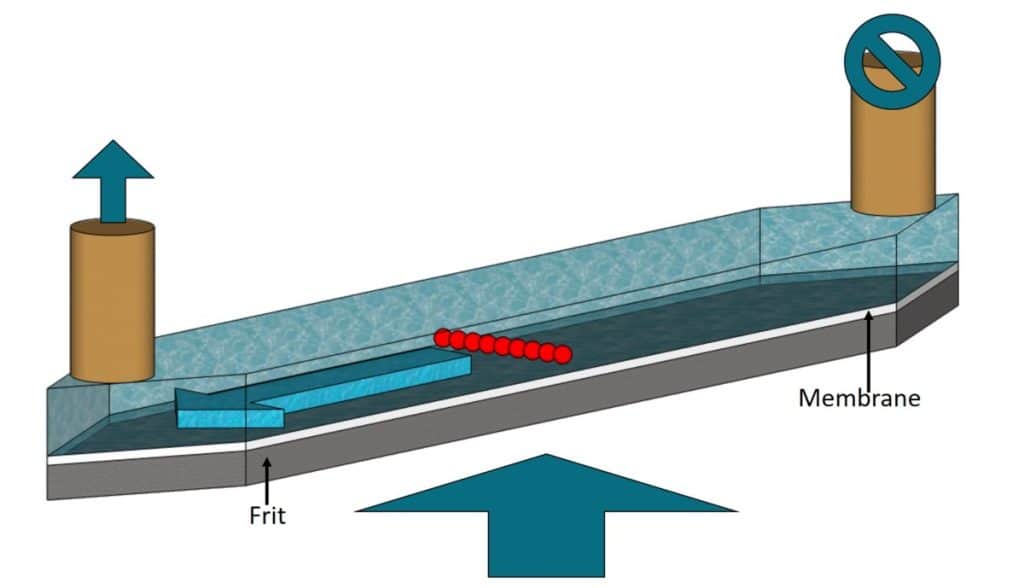
Reverse Flow
Reverse flow across the membrane lifts any adsorbed biomolecules off the membrane, ensuring efficient elution and low carryover. Further, membrane fouling is slowed, enabling a single membrane to function for typically 500 to 1,000 analyses.
Consistent Elution Volume
Regardless of input concentration, analytes are always eluted in the same volume, yielding predictable concentration enrichment.
Quantitative Performance
Linear quantitative performance over wide range of mass loading (10 ng to 1 ug).
What customers say:

Typical applications:
Operating in a simple online mode with denaturing buffers, the SampleStream™ platform enables rapid screening of clones for bispecific antibody production. The platform provides results that agree with orthogonal methods such as LC-UV and LC-MS in a fraction of the time, increasing throughput by up to 10x. When turn-around time matters, SampleStream™ delivers.
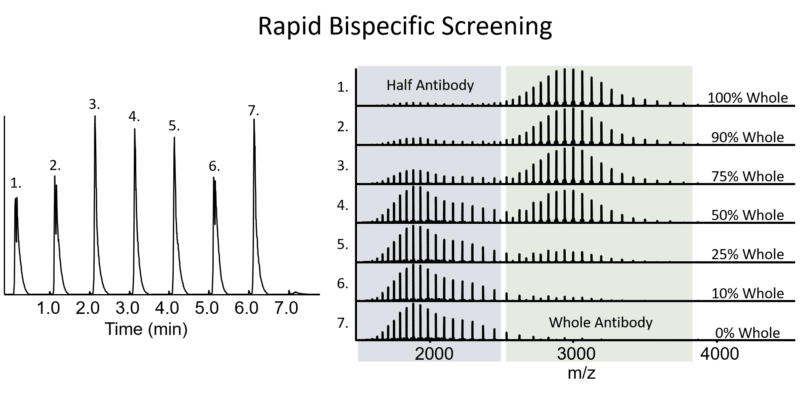
Coupled to mass spectrometry via a standard ESI source, The SampleStream™ deviced delivers capable sample preparation and automation of protein complexes. Eluted at 200 µL/min, GroEL (1 µg) and Pyruvate Kinase (500 ng) produce high quality spectra. High flow native MS can produce phenomenal data, provided the samples are sufficiently desalted. That is precisely what SampleStream™ was designed to do. Amazingly, since only the solvent changes, all of the throughput demonstrated in denaturing mode remains in native, enabling high sensitivity and truly high throughput native screening experiments.
This allows for rapid binder selection in affinity studies or screening of potential binders and binding characteristics in HTS.
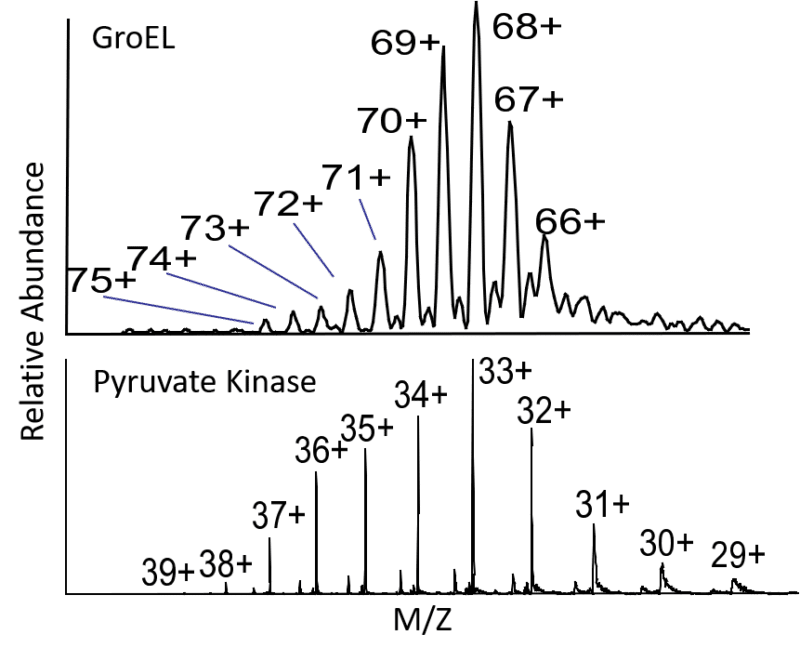
The inert properties of the membranes that SampleStream™ utilizes make it especially capable when analyzing challenging ADCs. Many ADCs utilize payloads that are very hydrophobic, making them especially prone to irreversible binding on SEC materials. The SampleStream™ flow cell excels with these molecules, not only keeping them intact, but also delivering high recovery. SampleStream™ also does not require high salt concentrations to prevent ion exchange-like interaction, an added bonus that keeps your instrument cleaner for longer. Here, 2 µg of Kadcyla was analyzed with 20 mM ammonium acetate with 10% IPA.
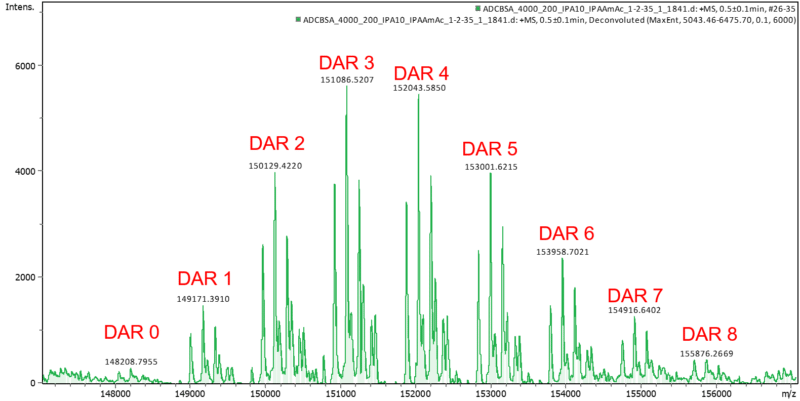
The unique plugin architecture of SampleStream™’s control software enables multiple modules to be installed on a single CTC PAL 3 robot. One particularly powerful configuration is a dual SampleStream™, dual head PAL 3 DHR robot. In this configuration, sample analyses times can be reduced to ~20 sec per sample, comparable to purpose-built high throughput systems. However, SampleStream™ maintains its solvent insensitivity in this mode, enabling operation at this throughput even in native mode. Further, additional modules may be added to the system at any time, enabling throughput to remain consistent even with longer methods utilized for more challenging matrices or grow with your needs.
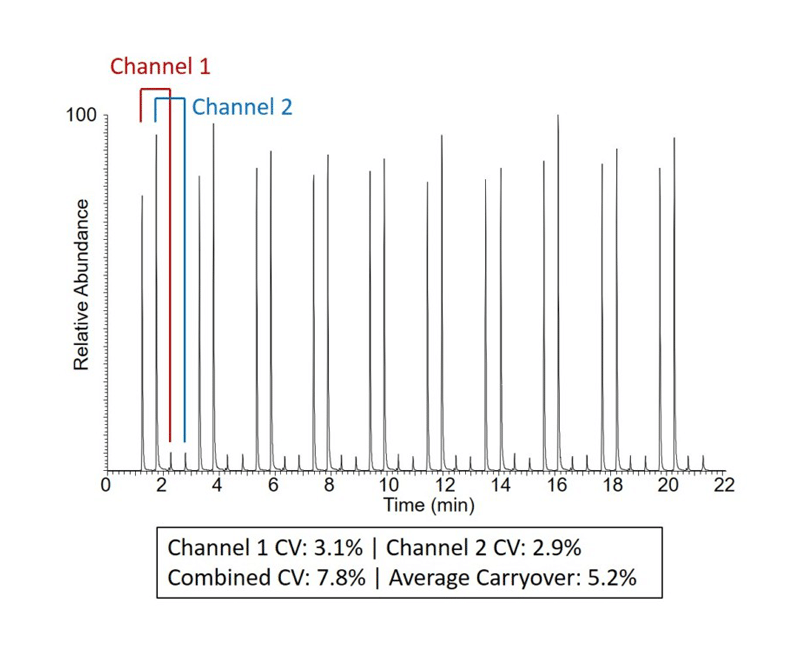
During operation, proteins and/or oligonucleotides are focused in a small volume. If an enzyme is added during this event, the reactions are significantly accelerated due to the high local concentrations of the enzyme and substrate. PNGase F, IdeS/IdeZ, and others can all be utilized online as part of a more complete sample preparation solution. In this experiment, Trastuzumab was analyzed before (A) and after (B) PNGase F digestion Trastuzumab. The total experiment time for (B) was 5 minutes.
The high local concentration of the analyte enables a highly efficient digestion with an effect similar to immobilized enzymes.
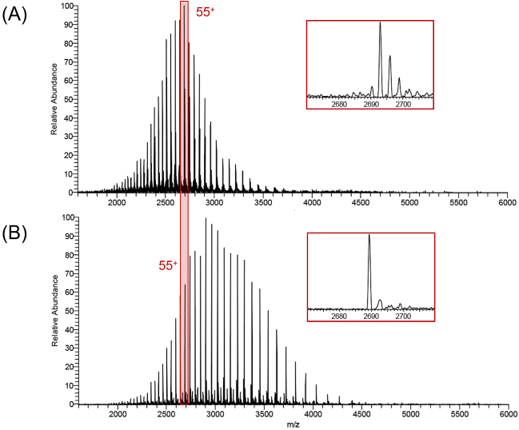
With up to 7 different solvents available on the syringe pumps and ample storage of precious reagents on the CTC PAL 3, samples can be exchanged into nearly any reaction buffer and dosed with controlled amounts of reagents. This enables the online reduction of e.g. monoclonal antibodies for rapid parallel analysis of heavy and light chains.
Here, Trastuzumab was reduced on the bench (A) and within the SampleStream flow cell (B) then analyzed directly. Again, the total experiment time was 5 min.
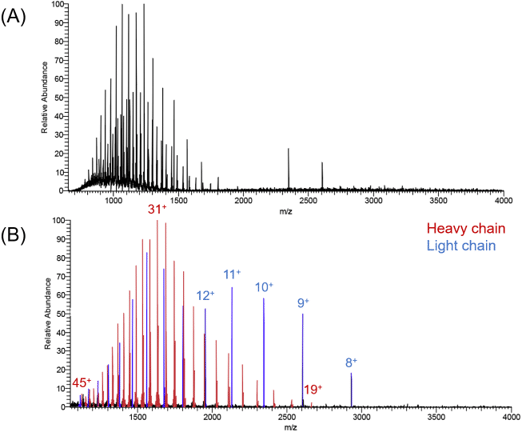
Similar to native mass spectrometry of proteins, the solvent insensitivity of the SampleStream™ platform enables oligonucleotide analysis with a simple solvent change. Again, depending upon the solvent chosen, oligonucleotide analysis can be performed in both native and denaturing modes. Here, a synthetic RNA was analyzed.
A specific advantage of the SampleStream™ system in comparison to HPLC is the fact that typical buffers for oligonucleotides such as quarternary ammonia salts tend to be extremely sticky in LC, commonly requiring dedicated LC systems for protein and oligonucleotide analysis. The easy washing procedure of the SampleStream™ fludics path and separated solvent pumps allow rapid switch between methods and the combined analysis of e.g. AAV shells and RNA payload on the same system.

